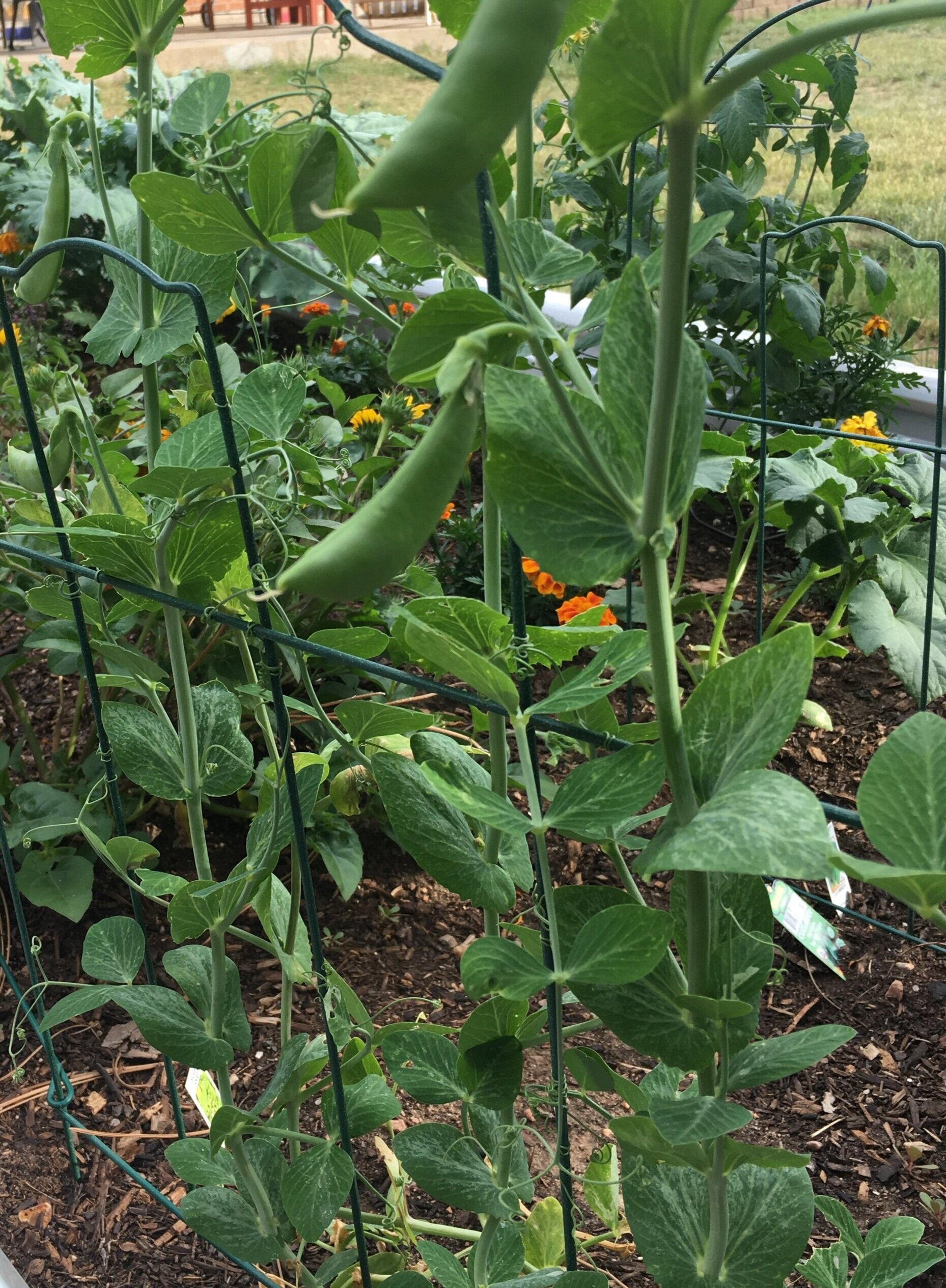Gardening - Pea Plants
Professional Chef, Amateur Gardener: Learn along with us as we explore growing our own food. Understanding the full life cycle of your ingredients can open up a new world of creativity and comfort when trying new flavor combinations. Picking the veggie or berry right off the vine and enjoying it immediately reminds you how complex, delicious, and satisfying food is.
Seed Situation
Last year was my first year growing peas and I used seedlings. This year I decided to purchase seeds and directly sow them into my garden soil. I did make one mistake though - I planted the seeds a little too late. I was worried about the cold bites and snow we still see in Denver in April and May, so I waited until mid-May to plant. Turns out many varieties of peas can survive a bit of frost, so its ok to plant peas earlier in the spring. Because of the time it took for the plant to sprout and pop out of the soil, I haven’t harvested as many plump, flavorful peas as I was able to last year. Peas prefer cooler temperatures and thrive in the early June weeks here in Denver. An early start is important for a robust, high yielding plant.
Soil Needs
Thankfully, peas aren’t too picky when it comes to the soil they are planted in. As long as the soil is near a neutral pH and drains well, the peas grow up pretty happy. That said, sandy soil is best. I made sure to amend my soil with some home-made compost while I planted the seeds, but haven’t had to add any side dressings since. The fascinating relationship between some species of legumes and rhizobia bacteria promotes nitrogen fixation in the soil. Additional science and studies are required to determine just how important the legume nodules are, if the nitrogen can benefit companion plants, and how quickly the benefits can be seen. But ‘The Three Sisters’ companion planting of corn (which need a lot of nitrogen), legumes, and squash has been practiced for centuries by Native Americans, so in my opinion there are benefits and we’ll just wait for the science and proven results to catch up to the proven experience we already know.
Trellising Options
Whether you plan a trellising option for peas or not, they will find something to climb up. The tips of their vines have thin fingers (tendrils) that grab onto neighboring plants, branches, or fencing so it's a good idea to plan for that climb. I situated a tall trellis near the base of my seedlings and trained the vines up the trellis. This ensures easy to harvest peas and breathing space for the plant.
Last year I used a thin metal structure for a trellis and this year I chose a wooden ‘V’ shaped trellis. Because the pea vines aren’t very heavy, you can even tie string to a tall apparatus and train the vines along the string.
Sunlight and Water Requirements
Peas prefer partial sun, so be sure to situate them in a slightly shady spot. Peas thrive in 4 - 5 hours of direct sunlight each day. I made sure my taller plants weren’t creating too much shade for the peas. My corn is on the north side of the peas and my tomatoes are in a separate garden box altogether. If your garden area has no existing shade and you want to provide a bit of protection for your peas, consider planting dill, cilantro, or fennel on the south side of your peas. With these herbs, you can simply choose to cut more or less leaves to maintain more or less shade for your peas.
The hotter it gets the more water your peas will want. The most important time to water is when the peas are blossoming and small pods are beginning to form. Like many other vegetable plants, peas respond well to one good soaking every few days. This helps the roots grow down deeper and find more nutrients in the soil. I lightly water my garden every other day just to make sure the soil never gets too dry.
Growth Journey
One to two weeks after planting seeds, the pea shoots peek out of the soil and the leaves develop quickly. As I mentioned before, as the pea vines grow they want to climb. The leaves will continue to pop up as the vines grow and one day beautiful white flowers bloom. Each pea plant has both female and male parts. Interestingly enough, pea plants can self pollinate if necessary (closing the flowers) Most often, they are pollinated by bees and insects feeding on the nectar in the flowers.
After pollination, the flower turns into a pod and the pod grows to become a delicious treat. The pod will grow for a couple weeks, then the peas inside will plump up, and then it's time to harvest.
Thankfully, peas can be harvested throughout various days during maturity. The peas will grow plump and vibrantly green as they age on the vine. Sweetness in the peas develops in a bell shape curve. Once the peas are plump, they’ll be sweet and delicious to snack on. The longer the peas stay on the vine, the sugar will start diminishing a bit and the pods can get thicker and tougher over time. Personally, I prefer harvesting sooner rather than later - partially because I’m just so excited to enjoy the fruits from the plant’s labor.
Delicious Dishes using Peas
Now that you’ve grown and harvested your peas, how are you going to eat them? Varieties like sugar snap peas are delicious to snack on straight from the garden. Sometimes and with some varieties, cooking the peas is the right move. Below are a few nourishing dishes we love to make with peas.











